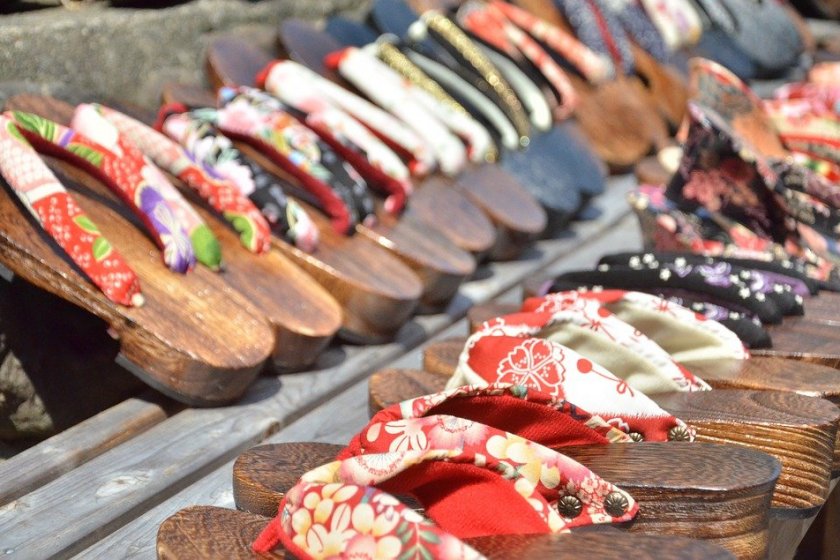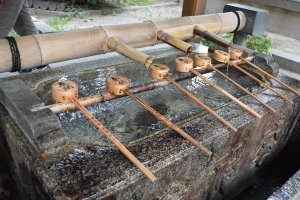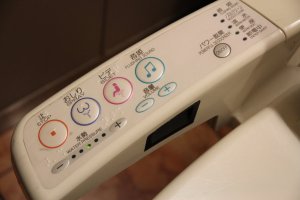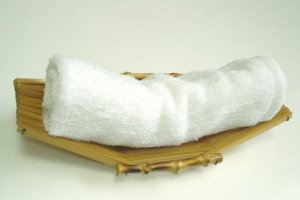Many people abroad imagine Japan as a neat and tidy country full of pristine streets and clean, pressed suits. While this image isn’t too far off, there are many factors that go into making Japan so clean. In a country where even a visit to the shrine results in you washing your hands and rinsing your mouth, being clean is a big deal — especially during a pandemic.

Marie Kondo is perhaps the leading figure for a “neat” Japan that has become popular in recent years—but for much longer Japan has been practicing daily cleanliness and you’ll benefit from knowing the customs during your visit.
Here are 9 ways that Japan gets hygiene right:
Cleaning schools
It’s pretty widely known that schoolchildren in Japan clean their classrooms. But perhaps the image that presents doesn’t go into as much detail as the actual cleaning! Students, from elementary school, are expected to clean the board, sweep the classrooms, wipe down the hallways with a wet washrag, clean debris off their fields—some countryside schools even have students tending school plants and gardens.

Students also serve their own lunches to one another. Their tasks rotate so that each student has a chance to be on latrine duty; something no one envies.
Also, after lunch, students are required to brush their teeth along with the teachers. This practice of cleaning the school and their teeth leads to not only a clean space where they can learn but also improved personal hygiene.
Masks
Even before the days of social distancing, masks were (and probably always will be) a major part of Japanese cleanliness culture. As you walk the streets or ride the trains, you’ll see dozens of people donning the white mask. This doesn’t mean that they’re sick (though some may be)—masks are also used during allergy season when sneezing is at a high.
Masks come in a variety of sizes, for children to adults, and patterns are becoming more and more popular; an obvious example is perhaps the “macho” black masks that many hip young men decide to wear. With these disposable masks being sold at convenience stores and pharmacies, you’ll have an easy time purchasing one should the need arise.
You won’t see or hear many people blowing their nose in public, however, as this is considered rude and dirty.
Tissue handouts
Walk through any major city in Japan—perhaps past electronic stores—and you’re bound to see people handing out packets of tissues. Mind you, their brand or business is inserted into each tissue packet cover but free tissues are nothing to sneeze at.
Some of these complementary tissues even carry a coupon for the business handing them out. Many tourists find themselves leaving with more pocket tissues than they know what to do with. All of this may seem a little odd given the aforementioned nose-blowing stigma.

Bowing
Although it’s become more common in recent years, tradition still stands and that tradition is bowing over handshakes. Many businessmen still prefer to bow to clients, seniors, and even foreign guests—unless a hand is proffered.
The history of bowing as a form of respect goes back to the Kamakura period (1185-1333) when the warrior class would bow to their lords as a sign of deference. It’s also said that bowing originated as a form of piety and devotion during the Buddhist movement in the 5th and 8th centuries.
However it really began, one thing is for sure—bowing is a part of Japanese culture. In fact, it’s so ingrained that small children begin bowing from a young age and it isn’t unusual to see someone bowing as they talk on the telephone. It’s so important, in fact, that companies train new employees on the proper way to bow and greet their customers.

Hand sanitizers in public areas
At the entrance to maybe hotels, ryokan, and even pachinko parlors, you’ll find hand sanitizer bottles. Many of these are automated nowadays, simply place your hand underneath and a fresh spritz of alcohol or sanitizer lightly coats your hands.
Conversely, pocket hand sanitizer is not very popular amongst Japanese people. Perhaps that goes back to the tradition of bowing over shaking hands.
Oshibori
Another way for your hands to stay clean in Japan is with the wet—and sometimes heated—napkins provided with meals. These are called oshibori and are used to clean your hands before, during, and after a meal. Oftentimes, establishments will provide a fresh oshibori to patrons after the meal so that you have a clean napkin to finish up with.

Oshibori are typically paper napkins (think a wet wipe) or a washcloth. In either case, they’re sanitized and wrapped in plastic so you can be sure they’re clean. It’s considered nice etiquette to fold your oshibori after your first use and keep it next to your plate.
Bidets
After a meal, you may find yourself visiting the restroom. While inside the stall, you might notice a panel of buttons next to the toilet or even on the side of the toilet itself. These buttons have confounded many a foreigner in the past and a curious visitor has sometimes ended up making a rather wet discovery when they press one.
These are controls for the automatic bidet. Oftentimes, there is also a noisemaker (♪) to cover the sound of using the bidet. There is a front bidet and a bidet for your bottom as well. Just don’t push the buttons if you aren’t sitting down—they’ll still activate and give the washroom a small shower.

On top of the tank of many toilets, there is also a washbasin and faucet. This water is clean and used to rinse your hands before properly washing your hands outside with soap and water.
Taking off your shoes
A well-known custom of Japanese households and even some businesses is removing one’s shoes before entering. This ensures that no dirt or mud is tracked across the floor.
Usually, when visiting a restaurant or establishment that requires you to remove your shoes, they will provide a pair of slippers for you to wear. Going barefoot in these guest slippers is frowned upon so if you like wearing sandals, it may be a good idea to carry a pair of emergency socks with you.
Some places where you need to remove your shoes may even surprise you. Small clinics, traditional restaurants, izakaya pubs, and indoor play centers are just a few places where you may be asked to take off your shoes. Not to mention before entering temples or shrines. You’ll usually see rows of shoes or shoe lockers to clue you in.

Trash cans
For being so clean, Japan has a distinct lack of outdoor trash bins. This is probably one of the most often noted things when visitors come to the big cities. Just where do they throw away their trash?
Well, outside convenient stores like 7-Eleven and Family Mart, you’ll find organized bins for combustibles, plastics, and others. But when you’re out and about, you may be hard-pressed to find another way to dispose of your trash.
If you’ve bought a drink from a vending machine, there’s usually a bin on the side for cans and plastic bottles (PET bottles). And inside train stations, you’ll typically find a set of trash cans on the platform.
More often than not, however, you will have to take your trash with you until you can throw it away properly.




























